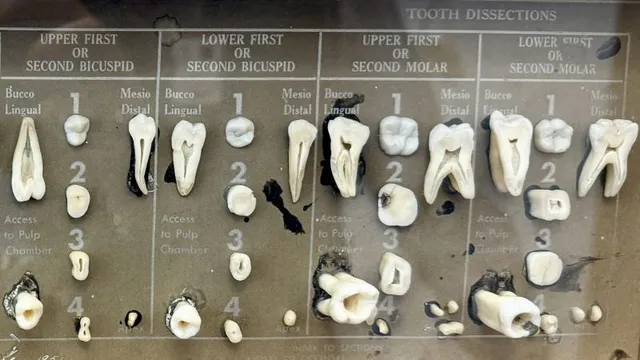
Utah braces for dental crisis after statewide fluoride ban
2025-05-07 00:00- Utah's fluoride ban affects 1.6 million residents, leading to fears of increased tooth decay.
- Many patients were unaware of the ban, indicating a lack of public awareness.
- Dentists predict dramatic increases in dental treatment needs among vulnerable populations.
Express your sentiment!
Insights
In Utah, a new law prohibiting the addition of fluoride to public drinking water systems took effect recently, marking the first statewide ban in the U.S. This legislation affects approximately 1.6 million residents, particularly in Salt Lake City and northern Utah, and is expected to significantly impact dental health, especially for children and low-income families. Many patients were unaware that fluoride had been part of their drinking water for nearly two decades, which raises concerns about rising rates of tooth decay. Dentists in the area have voiced alarm, predicting a spike in tooth decay among vulnerable populations, particularly children. The executive director of a clinic serving low-income patients noted that they already face long wait times for procedures and expect this situation to worsen as more children will need dental care due to untreated decay. Experts argue that fluoride plays a critical role in fortifying teeth and reducing cavities, and the sudden lack of this preventive measure could lead to serious health consequences. Florida also recently enacted similar legislation, with Governor Ron DeSantis emphasizing medical freedom and the need for informed consent regarding fluoride in drinking water. While supporters of the ban laud the move as a triumph for individual choice, critics highlight the historical success of fluoridation in preventing dental issues and express concerns over the potential rise in cavities and related health issues. As both states navigate these controversial changes, the overall implications for public health remain a significant concern among health professionals and community advocates. The actions taken by Utah and Florida could influence other states contemplating similar bans as they weigh the balance between individual rights and public health benefits.
Contexts
The history of fluoride in drinking water is intertwined with public health initiatives aimed at reducing dental caries, particularly among children. Fluoride, a naturally occurring mineral, was first recognized for its dental health benefits in the early 20th century. The initial findings emerged from research in the 1930s when scientists observed that children in areas with naturally high fluoride levels in their drinking water experienced significantly less tooth decay. This discovery laid the groundwork for the introduction of community water fluoridation in the 1940s, a public health intervention endorsed by numerous health organizations including the American Dental Association and the World Health Organization. In 1945, Grand Rapids, Michigan, became the first city to fluoridate its water supply, marking a pivotal moment in public health history. As the practice spread, many studies confirmed its effectiveness in reducing cavities by about 25% over a lifetime. By the 1970s, the majority of cities in the United States adopted fluoridation, leading to a substantial decrease in dental decay rates among the population. The benefits of fluoride were not limited to those with access to regular dental care; it proved to be a preventive measure that helped children from lower socioeconomic backgrounds who may not have had access to dental services. However, the fluoridation of drinking water has not been without controversy. While major health organizations endorse its safety and efficacy, some groups have raised concerns over potential health risks associated with long-term exposure to higher levels of fluoride, including the possibility of dental fluorosis, a condition that can affect the appearance of teeth. Additionally, debates over individual choice and consent have led to movements in various regions seeking to ban or reduce fluoride levels in drinking water. Opponents of fluoridation argue that the practice imposes medication on the public without their consent, fundamentally challenging the ethical principles of medical treatment. In recent years, research has continued to evolve, focusing on the dosage of fluoride, its potential systemic effects, and its overall benefit-risk profile. The ongoing dialogue about fluoride underscores the importance of public engagement and transparent communication of scientific findings. As of 2025, fluoride remains a crucial component of public health strategies aimed at promoting oral health, but attention to the balance between its benefits and potential risks continues to be a pertinent topic. The history of fluoride in drinking water illustrates a significant intersection of science, public policy, and community health that impacts millions globally.